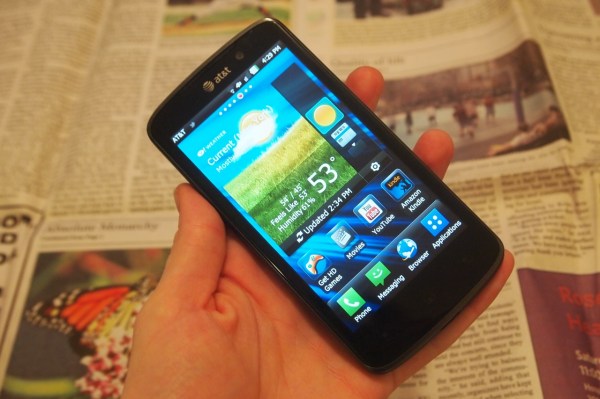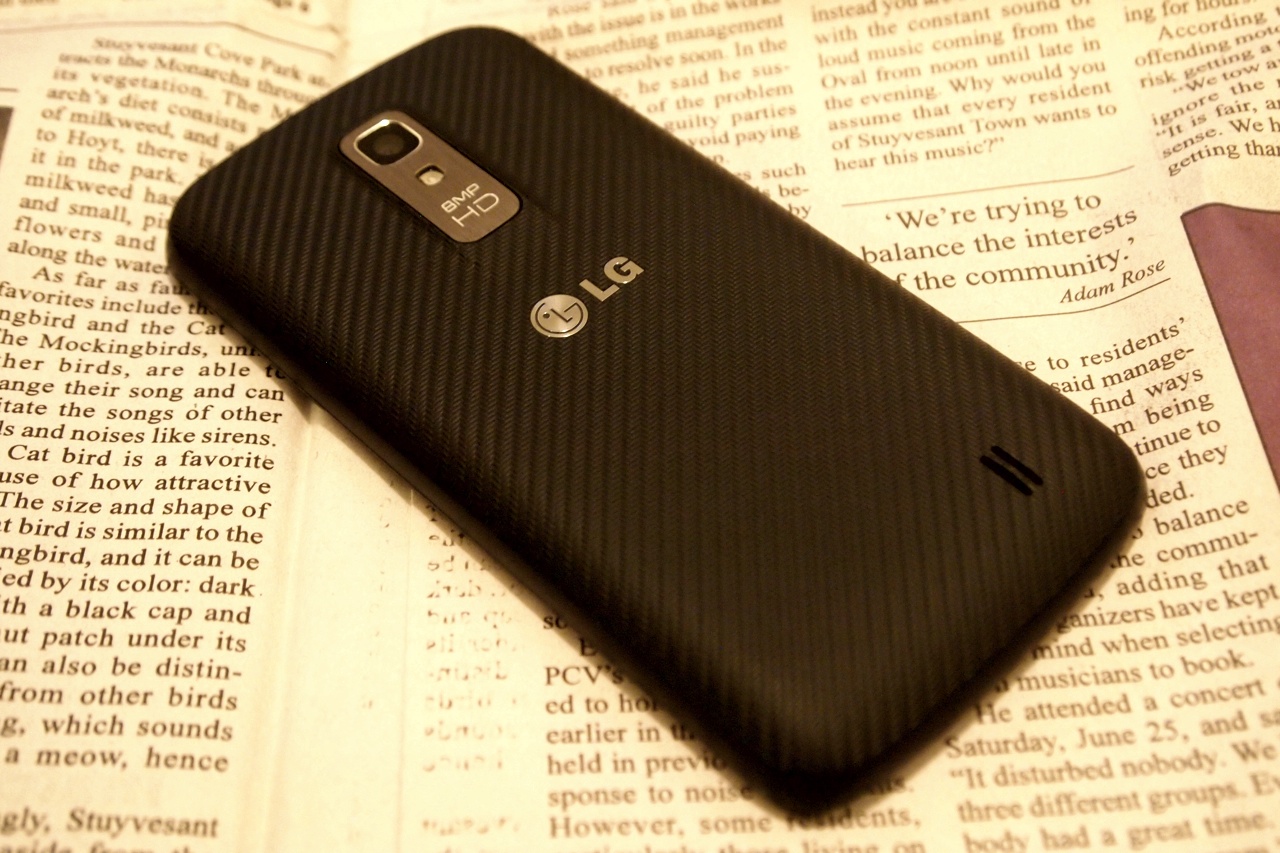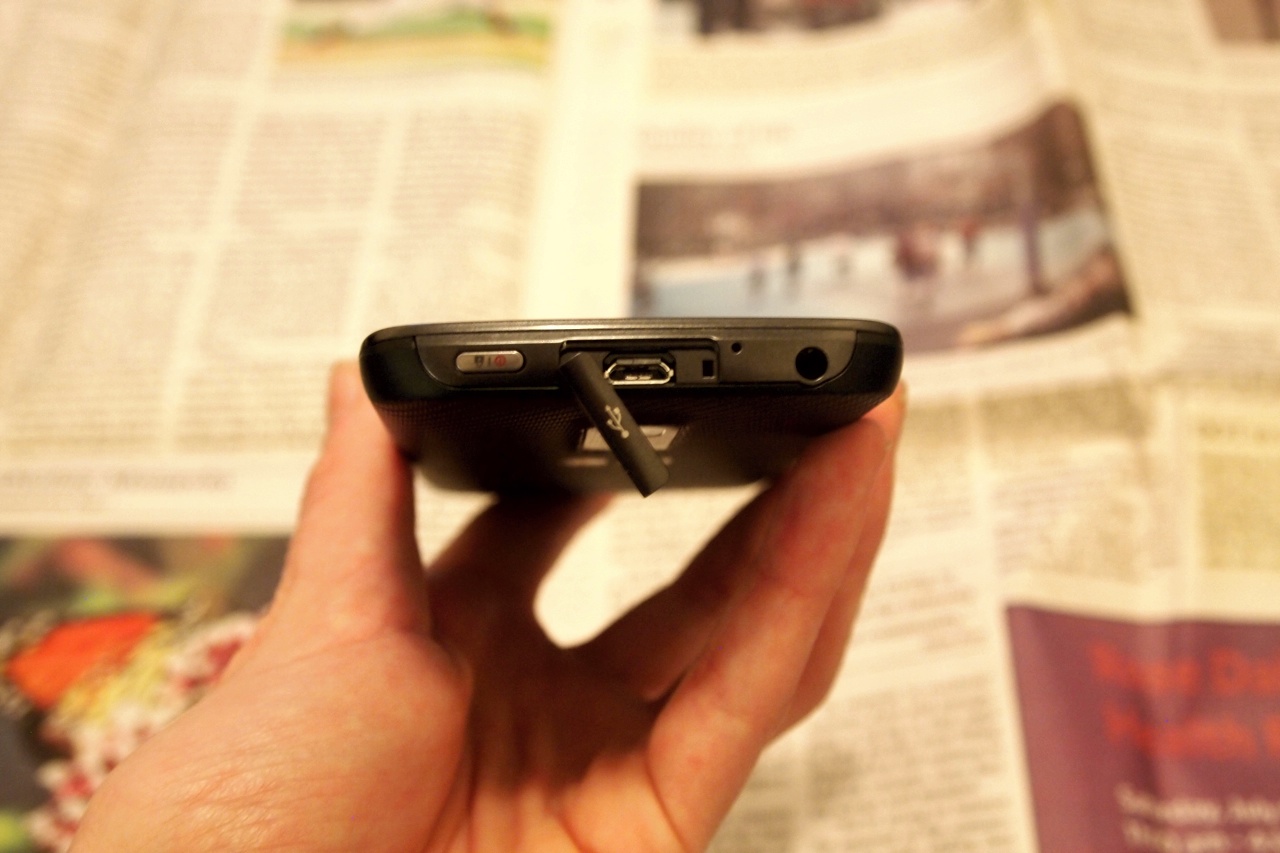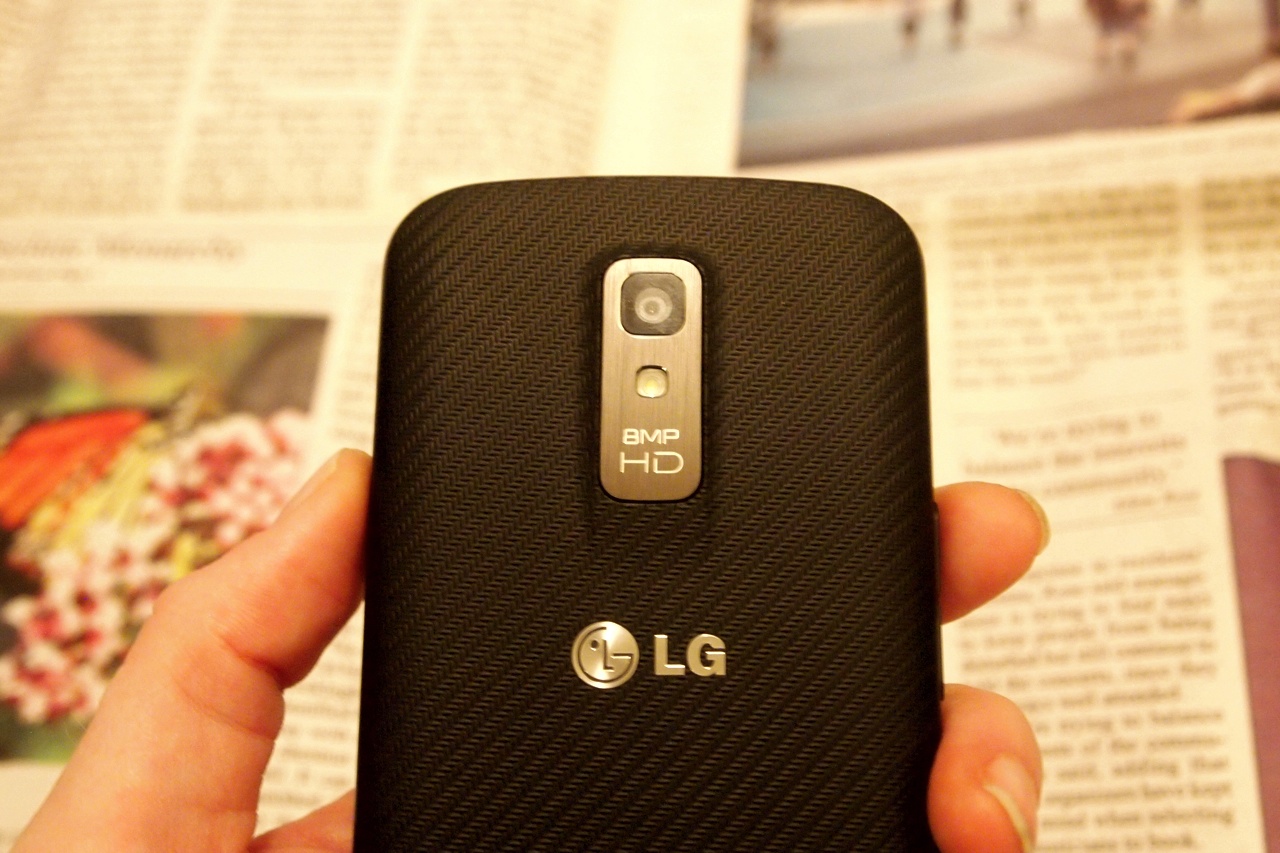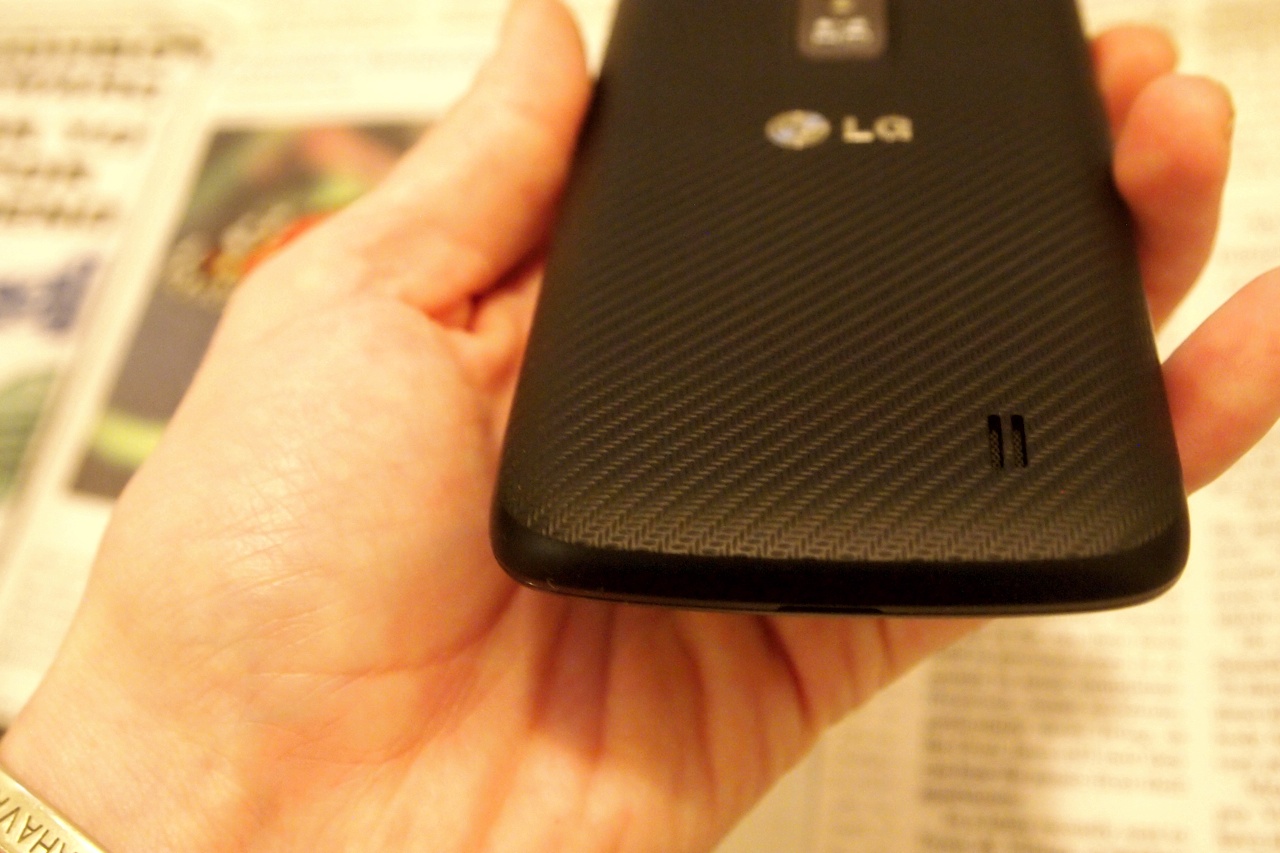Short Version
I find myself looking at the Nitro HD with mixed feelings. In some ways, it’s exactly what I’ve been asking for from LG, and in others it simply brings about disappointment. The software, in particular, failed to impress me. Hopefully a much more clogged 4G LTE network from AT&T (compared to the like, seven people that are using it now) will still find a way to outweigh the lag on what should be a high-end Android handset.
Features:
- 4.5-inch 1280×720 “True HD” IH-IPS display
- Dual-core 1.5GHz processor
- Android 2.3.5 Gingerbread
- 8MP rear camera (1080p video capture)
- Front-facing camera for video chat
- 4G LTE support from AT&T
- MSRP: $249.99 on-contract
Pros:
- An impressive 4.5-inch 720p display
- Solid camera
- Nice textured back panel
Cons:
- Not the smartest or sturdiest hardware
- It’s not terribly attractive, either
- Overall sluggish performance
Long Version:
To start, I want to say that this isn’t an awful phone and I want to applaud the fact that I think LG is moving in the right direction in terms of design. However, the LG Nitro HD simply isn’t the fastest, nor is it the most visually appealing phone on the market. LG made about as many good design choices as it did poor ones, in my opinion, and the software just doesn’t do anything to help it out.
The real shining star here is AT&T’s 4G LTE network, and unfortunately I’ve only been able to access that for a few minutes. That said, it seems to be rock solid showing download speeds between 17 and 20 megabits per second. Then again, there are only so many people playing on that network right now so it’s hard to make judgements.
Hardware:
The Nitro HD hardware shines in a few select spaces: the screen, the shape, and the textured back panel. Obviously the 4.5-inch 720p display can be considered the left cheek of this phone’s moneymaker (LTE being the right), and it does a good job at living up to the hype. We’re seeing great real-life color reproduction, and little to no differentiation between pixels.
The shape of the phone feels great in the hand, and this coming from someone who prefers boxier builds like the Droid RAZR. It has rounded corners and a flat face and back, which makes such a large phone a tad easier to grip. The top edge the phone has squared edges, and then curves off around the sides and on the bottom. It’s 10.4mm thick, which is the exact midway point between the HTC Rezound and the Droid RAZR. Not thick, but not anorexic by any means.
Then there’s the back panel. LG seems insistent on building plastic phones, which tend to feel a bit cheaper and less sturdy than phones made of metal. That said, the textured finish along the backside of the Nitro HD definitely makes the phone feel more solid and high-end than it actually is. Unfortunately, the majority of the phone, including that back panel, doesn’t take prints well at all.
But for all the good, there’s plenty of bad. The micro-USB port along the top has a plastic covering which will no doubt break off at some point. Plus, I’m not all that fond of placing a micro-USB port square in the middle of the top or bottom of a phone, as it makes it hard to do anything in landscape when the phone’s plugged in.
I’m also not all that thrilled with this strip of grey plastic connecting the black bezel to the rest of the phone. It simply works against all the work that textured back panel did to make this phone feel more high-end. In terms of sturdiness, I’m not all that convinced that the Nitro HD has the most solid build quality either.
It creaks quite a bit when stressed, and if you put any pressure on the back panel you can feel it move around a bit, like it’s not securely latched on.
Software:
When speaking on software I must first do some back-peddling when it comes to earlier statements. I do, in fact, have some complaints when it comes to software performance on the Nitro HD. I didn’t notice when doing preliminary tasks just how much Android lags and stutters when switching between home screens and scrolling. Web surfing wasn’t any better, with the entire screen freezing up and then jumping into position during any form of pinch-to-zoom.
LG’s Optimus overlay isn’t all that bad, to my surprise. The weather and social networking integration baked right into the UI are actually quite pleasant and seem to function quite well. The UI itself isn’t terribly obtrusive, but I fear that it may be contributing to the annoying lag I’m steadily growing impatient with.
You’ll find a handful of AT&T bloatware-style apps, along with Amazon Kindle, Qik Lite, MOG Music and Zynga Poker HD pre-loaded.
Camera:
I’m actually pretty enthusiastic about the Nitro’s 8-megapixel camera. While it is a test in patience getting from home screen to snapped picture, the end product is exactly what you hoped it’d be. We saw really clear color reproduction, though the pictures do stray into greenish/greyish territory when using flash in low-light situations.
The video capture capabilities performed well, too. It normally takes a second for a mobile camcorder to adjust from a sunny scene to indoors, but the Nitro HD’s camera did it quite quickly.
Performance/Battery Life:
To start I have to say that the speaker (lower-right portion of the back panel) on this phone is pretty underwhelming. Watching YouTube videos and talking on speakerphone was a struggle. Even with the volume all the way up, it makes you wonder what the point of a 4.5-inch HD screen is when you’re constantly holding the phone up to your ear.
When you can hear it, watching video on the screen is a joy, as is playing games. The same lag that plagues the OS in general — from multi-tasking to opening/closing apps — doesn’t seem to be present during gaming or video playback. A nice change of pace.
I’m also impressed with the battery life on the Nitro HD. I got a solid eight hours out of it (around five hours of setup, browsing, talking on the phone, gaming, taking pictures and watching video; the rest was standby). This may not sound like enough, but the truth is that most 4G LTE-capable phones suck wind in the battery department and eight hours is saying a lot. It’s also worth noting that I had the screen brightness turned all the way up.
Conclusion:
The Nitro HD is like a box of chocolates, you don’t know what you’re going to get. While watching video and playing games was a great experience, doing simple things like browsing the web or scrolling through the phone book was tedious. Some design choices (like that micro-USB mess) we could’ve done without, while others (like that back panel) are a great step in the right direction for LG.
At $249 on a two-year contract, I’d say a lot is riding on whether or not you live in one of AT&T’s LTE markets and just how well AT&T’s LTE network performs. So far, things are looking pretty good on that front so I’d suggest doing a little research on whether you’re covered and perhaps picking up a Nitro HD (or a Samsung Galaxy S II Skyrocket or HTC Vivid) and seeing how you feel about AT&T’s new network.
